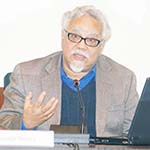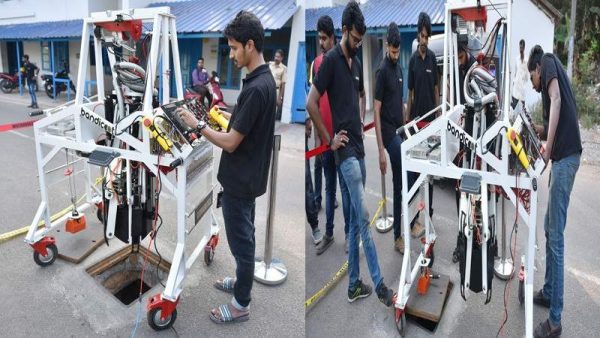
Network Asia: Globalisation And Regional studies
Nehru Memorial Museum recently held a lecture by Prof. Prasenjit Daura on the topic “History of Asia as a region”.
Prof. Daura is the Professor of Humanities, Director of Asia Research Institute and a Ph. D from Harvard University, USA. Partha S. Ghosh chaired the lecture.
Professor Daura started the talk by saying “Asia is merely a name given by the Greeks to the area east of them and it has expanded over time. So one can say that it is no more than a cartographic depiction that was not given by the people who lived there but by the outsiders, but that’s probably always the case”.

Dr. Partha -Chair
But it substantiality exists as a “Networked region”. So basically what I’ll be answering the question that what are the networks that had linked to Asia as an inter-dependent entity. There are two kinds of routes. First is the Silk route, which is being revived now. Then in the Mongol Empire there was a unification of the land silk route with the maritime silk route. He said that he would focus on maritime routes which flourished particularly between 1200 or 1300 till 1850, when the European took over the route. At that time there were networks between Chinese, Indian, Jewish and Arab merchants. They had a very sophisticated credit transfer mechanism.
He then conceptualised regions. He said, “A region comes to be defined in terms of hegemonic mode of spatial production. So Asia becomes a capitalist state by this time where relations are abstract, standardised and secured by property rights.”

The audience at the lectur
He then defined networks as “they expand spaces of exchange and innovation”. There was trade in artefacts, ideas, innovations, beliefs and rituals that have linked Asia. This trade had many facets. There was spread of Buddhism, spread of Confucianism, Islam came to South-East Asia via trade networks. So these networks become overlapping, imbricative, creates new point of density and concentration. So networks are carriers and shapers of history.
He then talked about an Ottoman ceramic artefact from the 17th century Iznik Ship where the design, the pattern and the materials were completely Chinese.

The chair and the speaker
Towards the latter part of his speech, he talked about the need for Regional cooperation. He said, “For me the most important thing is that the possibilities of regionalism have to do with the condition of the Anthropocene in which we live in. Where humans now collectively determine the sustainability of the Earth. So we need to coordinate common and linked problems of regional public goods or commons. Climate change, public health and environment. We have to transcend national interest in order to continue to have the nations”. Cosmopolitan community, which the speaker defines where all humans belong non-exclusively to a single community, must be able to share sovereignty on issues of collective consequences. So the modernization theory should be replaced with sustainable modernity. He also said that water, in today’s time, needs the most management. Himalayas has the watershed for 10 major Asian rivers. So water needs co-ordination and transparency to observe the effects across countries.
He then talked about ASEAN. ASEAN is a grouping of 10 countries and has been making big waves in the last decade. He said, “ASEAN is not very effective in what it does. But what it has been very good at is creating a framework of enmeshment. So its goal is to enmesh different regional and national powers so that they can have peace and prosperity in the area and can minimise conflicts”.

The Ottoman Ceramic Artefact
He concluded his lecture with a summation on his themes i.e. Network area and Regional Studies. He concluded that
• Network Asia is different from other regional models, especially the European Union. It is made of many networks.
• Complex regularity regimes have encouraged local communities and civil societies to resist hazardous environmental projects across the region.
• China can get bogged down in the quagmire of local politics and conflict.
• Sustainable and cosmopolitan modernity is the need of the hour.
• Changing the paradigm to one of sustainable modernity for the planet as a whole requires new conceptions, skills and methods.

Prof. Prasenjit Daura
Picture Credits : Neel Kamal Pandey








